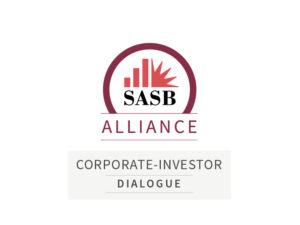Many companies use both GRI and SASB Standards to generate information that meets the needs of all constituencies and markets. Earlier this year, we published joint research exploring the experiences of companies that use the two sets of standards together to communicate effectively with their intended audiences.” The paper—which includes survey results and interviews with UK-based Diageo, City Developments Limited (CDL) of Singapore, US-headquartered General Motors (GM) and Canada’s Suncor Energy—shows how GRI and SASB Standards are complementary and can be used to meet the needs of a broad range of stakeholders. Here are five tips garnered from this research.
- Gather your resources.
Engage your network of reporting professionals, review current reporting best practices, review resources from GRI and SASB, and/or engage internal and external subject matter experts to help get started. - Make a business case.
Clearly articulate the value proposition for reporting to a diverse range of stakeholders and utilise the GRI and SASB standards to do so effectively and efficiently. - Know your stakeholders.
Understand who your internal and external stakeholders are and get to know their requirements. Based on these requirements, develop your plan to collect and externally report relevant data. - Start from scratch.
When implementing your reporting strategy, design for continuous improvement. GRI and SASB are a great place to start a reporting journey. - Just start.
Don’t let perfection be the enemy of progress. It’s important to get started with what you currently have, and drive towards improvements over time.
For more guidance on using the GRI and SASB Standard together, read our joint research.


